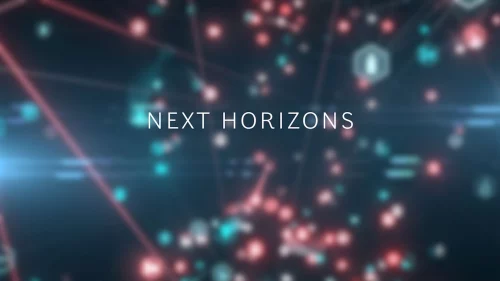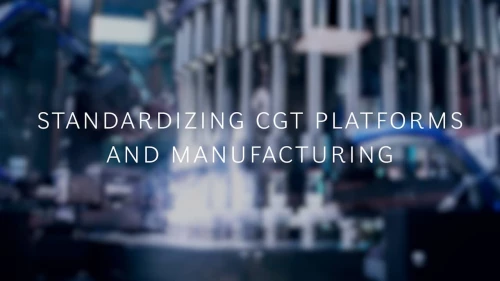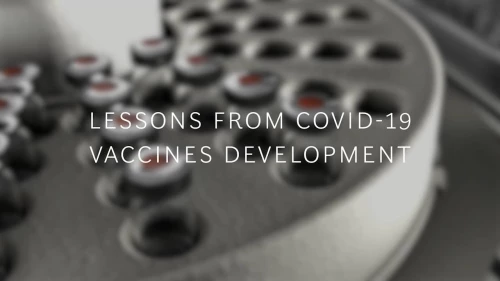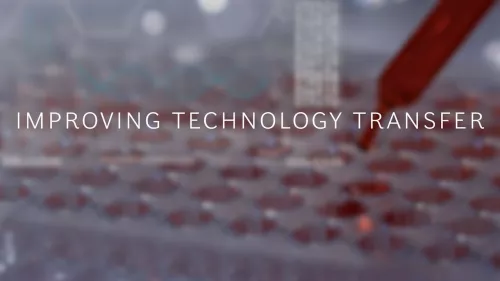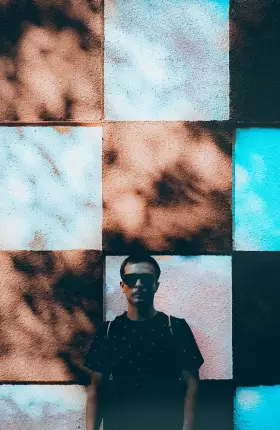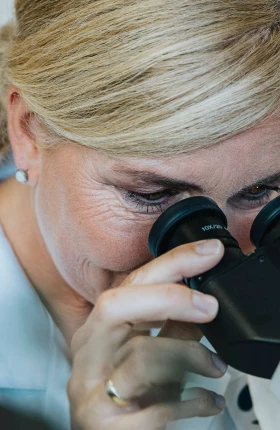BCG Managing Director and Partner Michael Choy recently sat down with Peter Marks, the director of the Center for Biologics Evaluation and Research (CBER) at the FDA. CBER is responsible for assuring the safety and effectiveness of biological products , including vaccines; allergenic products; blood and blood products; and cellular, tissue, and gene therapies. Below are edited excerpts from their discussion of several topics that are on the minds of cell and gene therapy (CGT) executives today.
There are a couple of exciting areas: cell-based gene therapies and directly administered gene therapies. For cell-based therapies, primarily chimeric antigen receptor T cells, we’ve really seen progress in manufacturing and development. They are more routinely progressing through the development process, so now we’re starting to see multiple approvals per year, and branching out from just the one hematologic target, CD19. On the horizon are other hematologic targets, as well as, potentially, solid tumors—especially as we start to look at allogeneic CAR-T cells, which could also be transformative.
We’ve also seen a lot of progress with directly administered gene therapies. We’re starting to bump into some toxicities, but we’re also seeing progress in terms of positive results, improvements in manufacturing technologies, and starting to branch out into things as cutting edge as directly administered or in vivo genome editing, which, once we get over the issues of off-target effects, could be really transformative.
INNOVATIONS IN CLINICAL DEVELOPMENT
There’s one for gene therapies with very small populations: can we find accelerated endpoints that we can agree are good enough to get us to an initial approval and allow us then to get the confirmatory endpoints over longer periods of time? Neurodegenerative diseases, in particular, have been a real problem because, even with gene therapy, it can take a few years to see that you’re making a difference. You can get lucky—for example, with SMA [spinal muscular atrophy] Type 1, you can get an answer relatively fast—but with many other diseases, it takes time.
If we could find ways to say, okay, look, you get to an enzyme level of X, which corresponds to an animal model being corrected for this deficiency. And you do that in enough patients using a Bayesian-type trial design that you start to feel confident that there’s a 90% or 95% chance that you’re really correcting to that level. You can then give an accelerated approval and move on to start to collect the clinical data, potentially in a decentralized way, ideally electronically or virtually. We start to bring those data in and then get that confirmatory data over the course of time so that you can convert that over to a full approval.
If we don’t move in the direction of using biomarkers, intermediate endpoints, to get there initially, it’s hard to see how we can handle hundreds of gene therapies for rare disorders. Trying to get there with hard clinical endpoints that meet the statutory standard of substantial evidence of effectiveness for the final clinical endpoint upfront for all of these disease entities is going to be very challenging. Getting there based on a surrogate to meet the accelerated approval standard is more possible.
I think expectations will evolve. Durability is all relative to what you’re dealing with. It also brings up the issue of what you’re actually doing with some of these therapies. The recent brouhaha over factor VIII and factor IX therapies for hemophilia occurred because you have a different situation than you have in many rare diseases, where there may be only one really effective treatment.
In hemophilia A or B, you have multiple approved alternative treatments—some factor concentrates that are short- or normal-acting, and others that are long-acting, and in the case of factor VIII there are bispecific monoclonal antibodies. There, you have a different bar. That complicates things as we think about gene therapies moving forward. But for the very rare diseases, it’s less of an issue.
The balance here is dealing with what the underlying disorder is. For a disorder that kills a child in five to seven years, parents will accept durability that gets you five to ten years, because they’ll say, if I can get five to ten years out of this gene therapy, something else will come along. If you have shorter durability, that could be an issue.
The other issue is that when you start to think about gene therapy for more-common disorders for which there might be an alternative therapy, the analysis is complicated by the economics of what you’re doing, as well. In other words, what can you actually charge for something that only gives you, on average, five years of correction when you can give another drug for that same five years that will cost less? What is the incremental benefit of not needing to infuse yourself once a week or once every two weeks? That’s more complicated, and I don't think we've worked all of it out yet.
We’ll see more work on genome editing. The concept of base editors that may be able to handle monogenic diseases in vivo could be a huge game changer. Obviously, there are a lot of safety issues to overcome.
We need to understand what the tolerance is, what we need to do to understand the off-target effects and the boundaries of what can be tolerated. We’re starting to learn that by genome editing in cells, but ultimately we're going to need to learn that by genome editing in people directly.
The other thing to watch for is whether we will eventually do heritable genome modification to deal with serious hereditary diseases. Some parts of the world have gotten comfortable with at least sticking a toe in the water. It’s going on in the United Kingdom for very specific types of heritable genetic modifications. I’m not going to take a position on whether we should go there or not; I just want to note it’s on the horizon.
Even though it’s not something that we can do right now in the United States, we can’t just put our heads in the sand, because at some point it could become possible. If we don’t understand where things stand with the technology, we’ll be at a disadvantage.
OPPORTUNITIES IN CHEMISTRY, MANUFACTURING, AND CONTROLS (CMC)
The question for me is how we can engage with the field. If we could leverage a given vector and reuse it, so that we weren’t reinventing the manufacturing process every time a new therapy came along, we might be a lot better off. In other words, if you had an AAV [adeno-associated virus] vector that was reused repeatedly for different inserts, you can imagine that could save a lot of time because you wouldn’t have to be reinventing the manufacturing process, the characterization process, and even some of the toxicology. That would be a significant advance and let us think about a gene therapy paradigm where there are different tracks—a secreted protein track, an intracellular enzyme track, a cell surface track, a structural protein track—where you could start to think about what we need for the vector information, what you would need for the clinical information to get an accelerated approval, and what you would need to get to a full approval for each of those tracks.
That might help us because, every time someone starts a gene therapy program, there’s a lot of starting from scratch. Science and technology grow really quickly when you build upon previous advances. If you look at the history of aviation, that’s what happened. Someone made a slightly better wing, and then someone made a slightly better wing, then a slightly better engine, then a slightly better engine than that. It’s not like they completely reinvented the engine every time. Unfortunately, we see that sometimes in manufacturing. It’s not that there’s total failure in leveraging prior work—it’s just not building upon things the way it could.
It would be great to see more collaboration, so that the innovation is focused on the gene therapy constructs and not the manufacturing. It looks like there’s a lot of time and effort spent on the secret sauce of manufacturing, whereas the real brainpower should be focused on what we are doing to address the disease rather than how we’re going to make it.
There are a lot of academics doing innovative things out there. Something is more valuable if the probability of success is higher. Maybe industry could come together around this concept of, if you as the academic do things in this manner—if you use certain vectors, use certain characterization, and stay within certain bounds—that product is going to be more valuable to us. The asset will be inherently more valuable. Then many academic investigators would have the incentive that they need to use a certain set of processes. I think if industry came together and thought about that, it could really help this move forward.
As FDA, we have the opportunity to be conveners and help with guidance in this area. We can help with others to convene workshops to advance manufacturing. Congress has shown us they are very interested in FDA helping to improve the manufacturing environment for cell and gene therapies. We can also issue guidance that can provide more predictability around what would happen if you follow these pathways.
STREAMLINING AND ACCELERATING REGULATORY REVIEW
There might be some effect of COVID. We may have a slightly smaller number of new therapies per year than anticipated. Some of the speed bumps that we are encountering with safety might affect that as well, although there also may simply be a shift in what we’re approving. We may see more genetically modified cell therapies, and slightly less of the directly administered gene therapies earlier on in that period after 2025. Then, as we approach 2030, I think we’re going to start to see more and more directly administered gene therapies. I feel pretty optimistic, particularly if we can get some of the regulatory pathways that we’re working on really moving nicely. If we can leverage one manufacturing technology, preclinical data for a vector, from one product to another, that may allow people to leapfrog.
Communication with the agency on products early and often really helps. That’s what helped with vaccines, cell therapies, even convalescent plasma. Anytime we had a dialogue in near real time, it made a big difference in avoiding issues in manufacturing and clinical development, and it really helped those products move forward quickly. Now there’s obviously a challenge in sustaining the staff needed to do that, but I think in the gene therapy area, it could make the difference between really leaping forward quickly or remaining at a crawl.
The other piece is that, for gene therapy particularly, we need to think more like we were thinking for the vaccines, which is plan for success, and if failure happens, you deal with it. We need to start getting our manufacturing processes together early on. Gene therapies are not small molecules. There is some scientific basis that makes you think there is a higher probability of success that you’ll end up with something that works. In small molecules, you didn’t want to spend a lot of money because there was a pretty small chance that those development lots would end up needing to turn into production processes. With gene therapies, it goes back to having things right at the beginning.
I think companies are generally doing a pretty good job. We have the INTERACT meetings, which is like a pre-pre-IND [investigational new drug application] meeting: people come in for their pre-IND meetings, and people contact us. We as an agency want to try to do better in the timeliness of communication around gene therapies in particular, because with the pandemic we’ve been so underwater that we’re behind on meetings. Trying to get all these back on track and in fact get ahead is really critical.
For the gene therapy world, my dream is to have Type A-like meeting timelines for most routine interactions. If we could get to meetings within 30 days for simple questions, that would allow people to move a lot more quickly. It would put the agency’s actions more in line with the small biotech ecosystem. When it takes us 90 days to get back to someone, that’s at the pace of large pharma. That’s a quarter of a year of cash burn, an awfully long time for a small company to wait for a yes-or-no answer. I’m oversimplifying it, but you get my drift here. If we could get to a shorter period of time, it would be very much appreciated. It might actually help people’s confidence in the ecosystem.
Right now, we’re looking at what we can do at our Office of Tissues and Advanced Therapies to put together a group of people, where for gene therapies—particularly for small indications—we could be transformative in what we’re doing. Obviously, we’d still need to staff up a fair amount, but we’re hopeful that as we move forward PDUFA VII, that will be happening. Being able to deliver this higher level of service, particularly in this growing field, will hopefully be a real benefit to all concerned.



